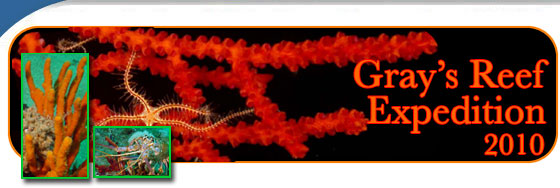Error processing SSI file
|
Gray's Reef Expedition
Log Day 9: May 25, 2010
Mathew Taylor
NOAA Hollings Scholar
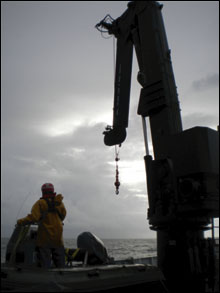 |
| Work starts early. Small boats are lifted off the Nancy foster by crane early in the morning to get the divers out to their targets and back before noon.(Photo: Matthew Taylor/NOAA Hollings Scholar)
|
NOAA ocean science is a lot more work than I thought it would be. This is my first time on a boat and seeing how much work is put into every action the crew performs has been an eye-opening experience. Upon arriving on the Nancy Foster yesterday I was asked to help out with fish tagging. I pictured a group of scientists casting lines over the boat, pulling in a dozen fish each, slapping on a tag and tossing them back. Instead, I was asked to board a small, fast boat and act as a ferry between the Nancy Foster and a separate fishing boat that spends the night on shore and meets us at sea every day. The fishing boat is focused on different spots than the Foster, so someone had to speed between the Foster and the fishing boat, grab whatever fish the fishermen/women had, and bring back to the Foster to drop them off. This becomes complicated for a few reasons.
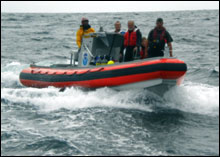 |
| A diving crew returns after a long morning. It's hard to tell in this picture, but the waves were 4-5ft at this point. (Photo: Matthew Taylor/NOAA Hollings Scholar)
|
Fist, the people fishing aren't guaranteed to catch anything, and when they do it's not always one of the three species of fish we are interested in. Second, the holding tank on our boat can hold only one fish, two if absolutely necessary. And to top it all off, the fish are so stressed and exhausted after being caught that they often require help swimming to keep oxygenated water moving over their gills.
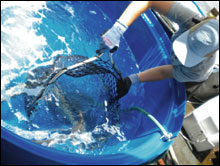 |
| Removing a fish from its tank to be returned to the sea.
(Photo: Matthew Taylor/NOAA Hollings Scholar)
|
When we arrived at the fishing boat there was only one fish waiting for us, but keeping it alive on the ride back was a full-time job. When the fish got back to the Foster, we placed it in a holding tank. All fish that we catch have to be monitored for 24 hours to make sure they're healthy enough to be tagged. The "surgery", placing an internal tag in the fish, requires 3 people: two to carefully hold the fish in a special restrainer and one to cut a small incision and place a tag inside. After this, it's another days wait for the fish and then it is released on the exact spot it was caught.
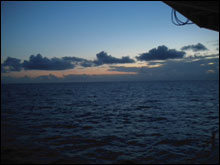 |
| A nice sunset at the end of a long day.
(Photo: Matthew Taylor/NOAA Hollings Scholar)
|
The rest of my day was spent helping out where I could and observing similar situations where a lot of work was put into doing something I took for granted before coming aboard this ship. Did you know there are areas of sea-floor 20 miles off the coast of Florida and Georgia that have not been mapped yet? There are a lot of them, and people working on this ship are putting a lot of work to shrink the amount of sea-floor we don't know about. How do buoys get placed in the middle of the ocean? I watched some divers ride a 15ft boat out in 5ft swells and strong current to place a few. There's a lot of work that goes into every facet of this operation, it's tough and rewarding, and I'm glad I'm getting to play a (very) small part in it all.
|

